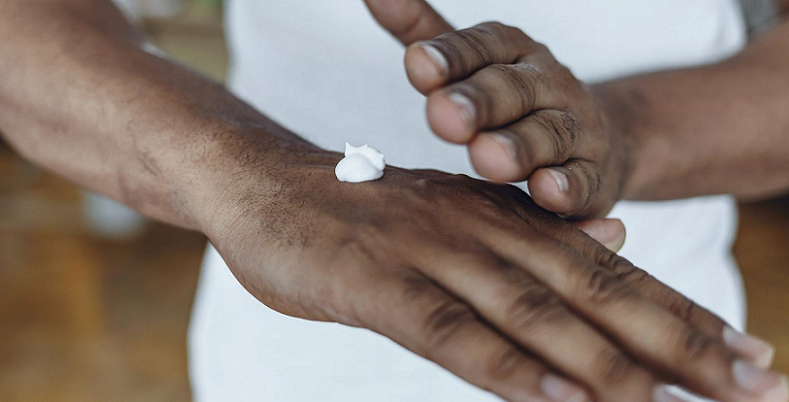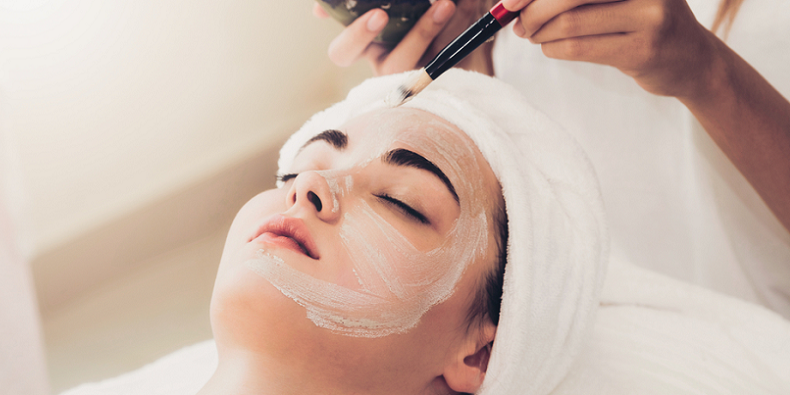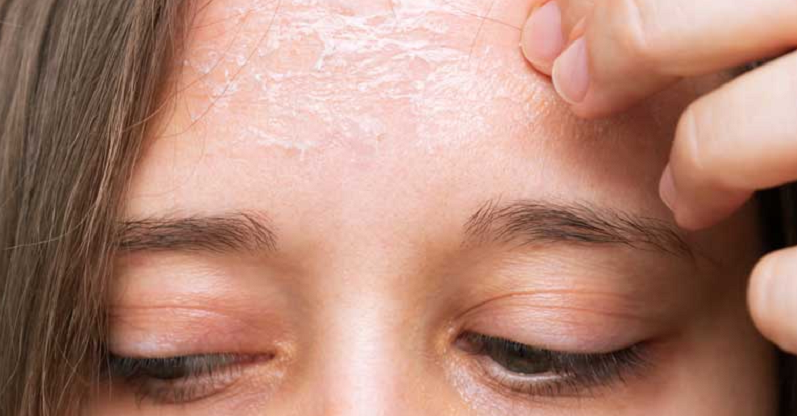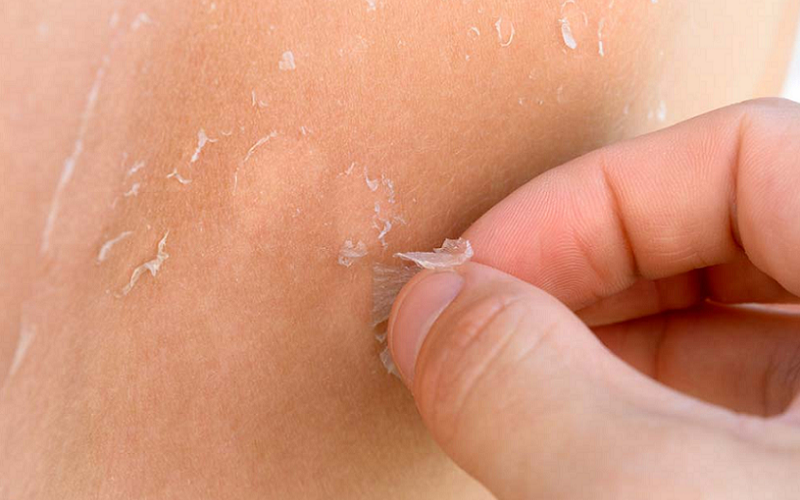Every day, our skin undergoes a silent and intricate process of renewal. This dance of cellular regeneration keeps our skin looking radiant and healthy. Central to this rejuvenation is a process known as desquamation. But what exactly is desquamation, and why is it pivotal for our skin’s overall health and appearance? Here we demystify the layers of your skin, discover the science behind its natural shedding, and learn how to best support this essential process for a glowing complexion.
The Skin’s Structure: A Brief Overview
Our skin is a complex organ, a protective barrier that shields us from environmental aggressors and plays a pivotal role in numerous bodily functions. Before diving into the specifics of desquamation, it’s essential to grasp the basic structure of the skin. This will lay the groundwork for a more in-depth understanding of where and how desquamation occurs.
The Epidermis: Where Desquamation Occurs
The skin’s outermost layer, the epidermis, is a dynamic region made up of several sub-layers. Each of these sub-layers has a unique function and characteristic:
Stratum Corneum
This is the outermost sub-layer, composed of dead skin cells. These cells are packed with keratin and surrounded by lipids, forming a barrier that protects the underlying tissues from dehydration, bacteria, and mechanical stress. The cells in this layer are continually being shed through desquamation.
Stratum Lucidum
Situated directly beneath the stratum corneum, this layer is found mainly in the thick skin of the palms and soles. The cells here are densely packed, transparent, and filled with a substance called eleidin, which later transforms into keratin [1].
Stratum Granulosum
This layer contains granules that release lipids and enzymes. The enzymes play a role in breaking down cell structures, while the lipids act as a water-repellent sealant for the skin.
Stratum Spinosum
Often referred to as the “spiny layer,” this is where skin cells begin to flatten out and become interconnected by desmosomes, giving it a spiny appearance under the microscope.
Stratum Basale
As the deepest sub-layer of the epidermis, it’s here that new skin cells are produced. These cells gradually push their way to the surface, undergoing several transformations along the way.
The Dermis and Hypodermis: Supporting Layers
Beyond the epidermis lies the dermis, a thicker layer housing blood vessels, nerve endings, sweat glands, and hair follicles. This layer provides structural integrity to the skin and plays a vital role in thermoregulation, sensation, and nutrient supply.
Directly beneath the dermis is the hypodermis or subcutaneous layer. Composed mainly of fat and connective tissues, the hypodermis acts as an insulator, energy storage site, and cushion against physical impacts.
In understanding the layered complexity of the skin, it becomes clear that each layer contributes to our skin’s health and appearance. The process of desquamation, starting in the stratum basale and culminating in the stratum corneum, is integral to maintaining this delicate balance.

The Desquamation Process Explained
A fascinating journey takes place beneath the very surface of our skin. Desquamation, often synonymous with skin shedding, is a continual process vital for skin health. This natural mechanism allows our skin to rejuvenate and protect itself.
The Life Cycle of a Skin Cell
Every skin cell begins its journey deep within the stratum basale of the epidermis. Here, a delicate dance commences:
Birth
New keratinocytes (skin cells) are formed in the stratum basale. These cells are plump, rounded, and filled with essential nutrients.
Journey Upward
As newer cells form, the older keratinocytes start their upward migration. As they move towards the skin’s surface, they undergo a series of transformations [2].
Maturation and Death
By the time these cells reach the stratum granulosum, they begin to flatten and their organelles disintegrate. They produce keratin and lipids, essential for forming the skin’s protective barrier.
Surface and Shedding
Once they arrive at the stratum corneum, they are now flattened, dead cells filled with keratin. Over time, these cells are shed to make way for the newer cells pushing up from below.
Factors Driving Desquamation
Desquamation isn’t a random event; it’s a meticulously orchestrated process driven by various factors:
Natural Enzymatic Activity
Enzymes present in the stratum corneum break down the proteins and lipids holding the cells together, facilitating their shedding.
Internal Signals
Hormonal changes, particularly those related to estrogen and thyroid hormones, can influence the rate of skin cell production and shedding.
External Triggers: Factors like humidity, temperature, and skincare routines can either aid or hinder the desquamation process.
The Natural Shedding Process
As the skin cells complete their life cycle, they find themselves on the skin’s surface as part of the stratum corneum. Over a span of 2 to 4 weeks, these cells naturally slough off, making way for fresh cells beneath them. This shedding process is so subtle that, under normal conditions, we don’t even notice the millions of cells we lose daily.
However, it’s when this process gets disrupted—either sped up or slowed down—that skin issues like dryness, flakiness, or acne can arise. An understanding of desquamation, therefore, is not just about appreciating a natural marvel but also about preempting potential skin challenges.

Why is Desquamation Important for Skin Health?
Amidst the myriad of processes occurring beneath our skin’s surface, desquamation holds a place of paramount importance. It’s not just about shedding old cells; it’s about upholding the skin’s health, appearance, and function.
Prevention of Dead Skin Accumulation
The skin’s uppermost layer, the stratum corneum, plays the dual role of protector and beautifier. By shedding old, dead cells, desquamation ensures this layer remains functional and aesthetically pleasing [3].
Avoidance of Clogged Pores
Dead skin cells can mix with sebum (the skin’s natural oil) to block pores. Regular desquamation prevents this accumulation, thereby reducing the risk of comedones, which are the precursors to acne breakouts.
Reduced Dullness and Uneven Texture
An excessive buildup of dead skin cells can give the skin a dull, rough appearance. By promoting regular turnover, desquamation lends the skin a more radiant and smooth texture.
Facilitation of Optimal Skin Barrier Function
Our skin’s barrier is its first line of defense against environmental aggressors, pathogens, and dehydration. The shedding of cells plays an integral role in maintaining this barrier’s integrity.
Protection from External Aggressors
A well-regulated desquamation process ensures that the stratum corneum remains intact and robust, offering resistance against harmful bacteria, allergens, and chemicals.
Moisture Retention
The presence of fresh, tightly-packed cells in the stratum corneum helps retain moisture, preventing excessive dryness and flakiness.
Promotion of Fresh, Younger-Looking Skin
The process of bringing new skin cells to the surface is synonymous with revealing fresher, more vibrant skin.
Rejuvenated Appearance
As the skin naturally sheds its outermost layer, it unveils cells that are plumper, more translucent, and less marked by external damage.
Reduction in Visible Signs of Aging
A regular turnover of skin cells can mitigate the appearance of fine lines and age spots, lending the skin a more youthful look.
Assistance in Topical Product Efficacy
Your skincare routine benefits immensely from an efficient desquamation process.
Enhanced Absorption
With the regular removal of the uppermost layer of dead cells, skincare products can penetrate more effectively, enhancing their overall efficacy [4].
Improved Product Performance
With a smoother and more receptive surface, products can work more uniformly, leading to more consistent results.

Factors Affecting the Desquamation Process
While desquamation is a natural and self-regulated process, it doesn’t operate in isolation. Numerous internal and external factors can influence the pace and efficiency of this cellular turnover, impacting the overall health of our skin. Recognizing these factors not only broadens our understanding but equips us to better navigate potential skin challenges.
Age
Ageing is an inevitable part of life, and with it come changes in our skin’s ability to renew itself.
Slowed Cellular Turnover
As we grow older, the rate of skin cell production and, consequently, desquamation tends to slow down. This can lead to a thicker buildup of dead skin cells on the surface, making the skin appear more dull and dry.
Reduced Natural Exfoliation
The skin’s natural ability to shed dead cells diminishes with age, often necessitating a more proactive approach to exfoliation in our skincare routines.
Genetics
Our genetic makeup plays a subtle yet undeniable role in our skin’s behavior and characteristics.
Inherent Skin Type
Some people naturally have drier skin, which can slow the desquamation process. Conversely, those with oilier skin may experience quicker cellular turnover but with a heightened risk of pore-clogging.
Predisposition to Skin Conditions
Genetic factors can make some individuals more prone to conditions like psoriasis or eczema, which can impact the skin’s natural shedding process [5].
Environmental Stressors
Our surroundings exert a considerable influence on our skin, often dictating how efficiently it can shed and renew.
Sun Exposure
Ultraviolet (UV) rays from the sun can damage skin cells and disrupt the natural desquamation process. Prolonged sun exposure without protection can lead to premature aging and reduce the skin’s ability to shed effectively.
Pollution
Airborne pollutants can settle on the skin, potentially clogging pores and inhibiting the natural shedding of skin cells. Over time, this can lead to a dull complexion and increased sensitivity.
Climate Changes
Variations in humidity and temperature can affect the skin’s moisture levels and its desquamation rate. Dry, cold climates may slow the shedding process, leading to flaky skin, while humid climates can accelerate it.
Skin Care Routine
The products we use and the routines we follow can either support or hinder the desquamation process.
Over-Exfoliation
While exfoliating can aid in removing dead skin cells, doing it excessively can strip the skin of its natural oils, disrupt its barrier, and impair the natural desquamation process.
Lack of Moisturization
Moisturized skin supports efficient cell turnover. Neglecting to hydrate and moisturize can make the skin’s surface dry, leading to reduced shedding.
Use of Harsh Products
Products with high concentrations of certain ingredients or those not suited for one’s skin type can disturb the natural balance and rhythm of skin cell renewal.
Tips for Supporting the Natural Desquamation Process
Promoting optimal skin health means fostering an environment where the desquamation process can thrive. Given its vital role in keeping our skin fresh and rejuvenated, supporting this cellular turnover becomes crucial. Armed with insights about factors affecting desquamation, we can now explore actionable steps to encourage this process.
Daily Protection Against Sun Damage
The sun, while essential for many bodily functions, can be a foe to the skin’s natural renewal process.
Wear Sunscreen
Using a broad-spectrum SPF daily, even on cloudy days, safeguards the skin against harmful UV rays, thus preventing damage to skin cells and ensuring a healthy turnover rate.
Seek Shade and Wear Protective Clothing
Beyond sunscreen, hats, sunglasses, and long-sleeved garments can offer an additional layer of protection.
Maintain a Balanced Skincare Routine
Tailoring your skincare routine to your unique needs can significantly aid the desquamation process.
Gentle Exfoliation
Incorporate mild exfoliants, whether chemical (like AHAs or BHAs) or physical, to assist in the removal of dead skin cells. Remember, moderation is key to prevent over-exfoliation.
Stay Hydrated
Using moisturizers and hydrating serums can keep the skin plump and facilitate smooth cell turnover. Drinking ample water daily also supports overall skin health.
Choose Suitable Products
Ensure the products you use align with your skin type and specific needs. For instance, those with dry skin might benefit from richer creams, while oilier skin types might prefer lightweight, non-comedogenic formulations.
Address Environmental Factors
Being mindful of the environment you’re in and how it affects your skin can make a significant difference.
Air Purifiers
Consider using air purifiers to reduce indoor pollutants that can settle on the skin and inhibit its natural shedding process.
Adapt to the Climate
Adjust your skincare routine based on the weather. In drier climates, focus on moisturizing, while in humid environments, ensure your products aren’t pore-clogging.
Embrace a Healthy Lifestyle
The health of our skin often mirrors our overall well-being.
Balanced Diet
Incorporate antioxidant-rich foods, essential fatty acids, and adequate proteins to support skin health and promote efficient cell turnover.
Manage Stress
Chronic stress can take a toll on skin health. Practices like meditation, regular exercise, and ensuring sufficient sleep can mitigate stress-related skin issues.
Avoid Smoking and Limit Alcohol
Both smoking and excessive alcohol can negatively impact the skin’s natural processes, including desquamation. Reducing or eliminating these habits can foster better skin health.
References
[1] Peeling Skin Disorders: A Paradigm for Skin Desquamation
[2] Peeling Skin
[3] Desquamation in the Stratum Corneum
[4] The stratum corneum: structure and function in health and disease
[5] Peeling Skin

